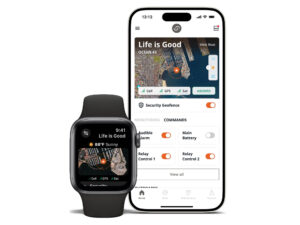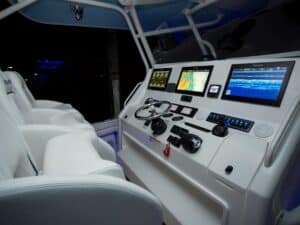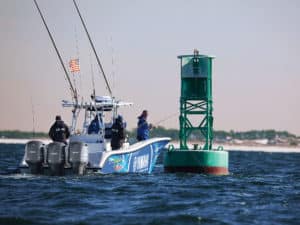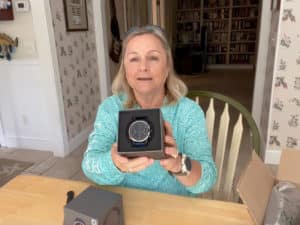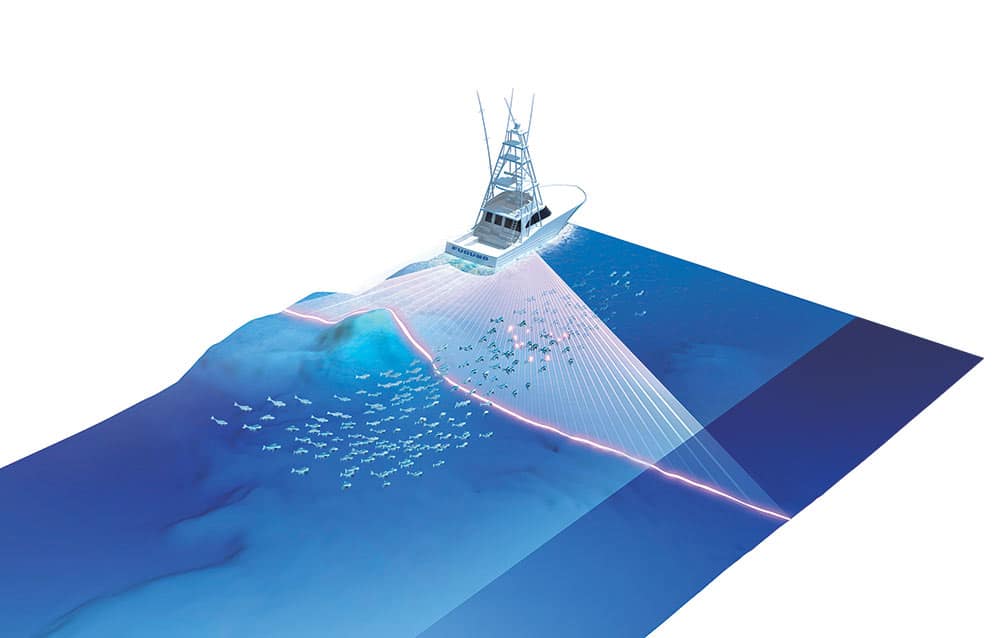
Three-dimensional visual effects date back to the mid-1800s, believe it or not. Crafty inventors used two pictures and a set of lenses to create stereoscopic viewing. The use of 3D in sonar, however — not quite so dated, and also, not very easily defined.
Early 3D sonars for commercial use seem to have surfaced in the 1970s. The first recreational 3D for anglers: 2015. However, something of a precursor to 3D — Humminbird’s 360 Imaging, which sweeps in a complete circle — was introduced in 2012.
To achieve 3D and other effects, electronics-makers often use software plus multielement, and sometimes multibeam, transducers to triangulate the position of fish and structure underwater. Then they must display that on a two-dimensional screen.
3D-sonar results can be striking, showing graphic images of what’s beneath the boat from any and every angle possible. Here are descriptions of how each manufacturer achieves 3D and other effects, and how that translates to the screen.
Furuno
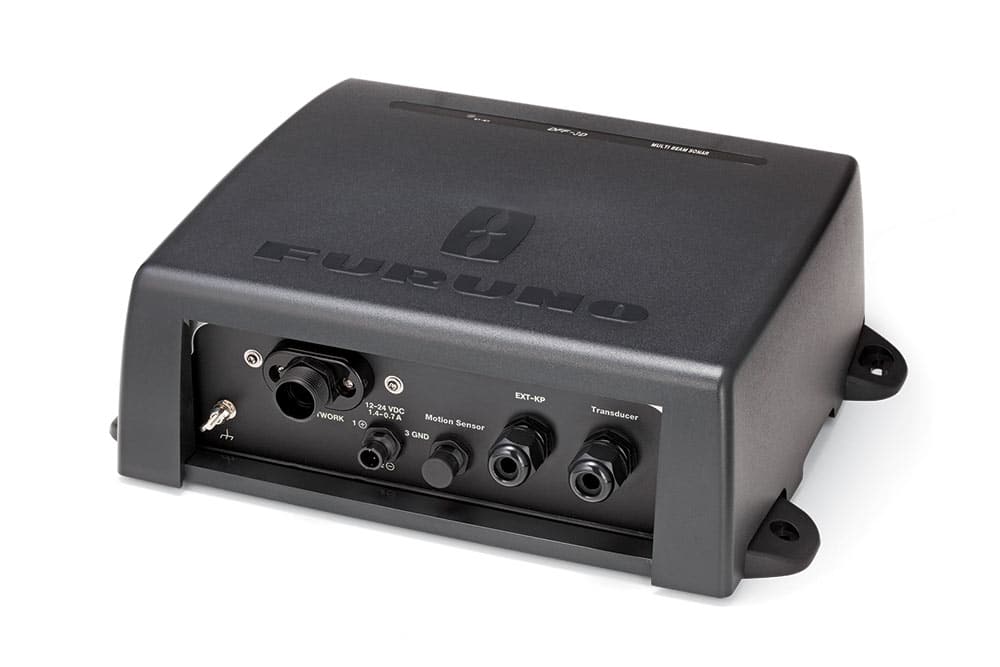
While Furuno has built commercial 3D sounders for several decades, it was just this past February that the company introduced a recreational version: the DFF-3D multibeam sonar, which can display targets in simulated 3D. Because of its experience, the company took a different tack from most of its competitors when creating this product.
“The difference with our system, in addition to operating at a lower frequency, is the way we incorporated our transducer so it doesn’t reach out so far,” says Eric Kunz, Furuno senior product manager. “Ours is a flat-face transducer instead of a triangular style. Those point outward. They use a single outward beam, and the image is stitched together [with algorithms].”
Furuno uses something called phase shifting to electrically steer the sonar beam under the boat. Eight ceramic elements within the transducer create a 120-degree swath of sonar coverage. Using a combination of receiving patterns and by timing the signals, the sonar beam sweeps the bottom at a high speed.
The frequency at which the DFF-3D operates is 165 kHz, a good bit lower than the more commonly used imaging-sonar frequency of 455 kHz.
Furuno’s lower frequency allows the sonar beam to penetrate deeper into the water column — up to 1,000 feet.
Pricing for the DFF-3D sonar module, which features four different modes — plus either a 3D through-hull transducer that measures about 6 inches long and 5 inches wide and mounts with a fairing block or a 3D transom-mount transducer — starts at $2,700. Furuno also recently introduced a combination high-chirp and 3D transducer.
Garmin
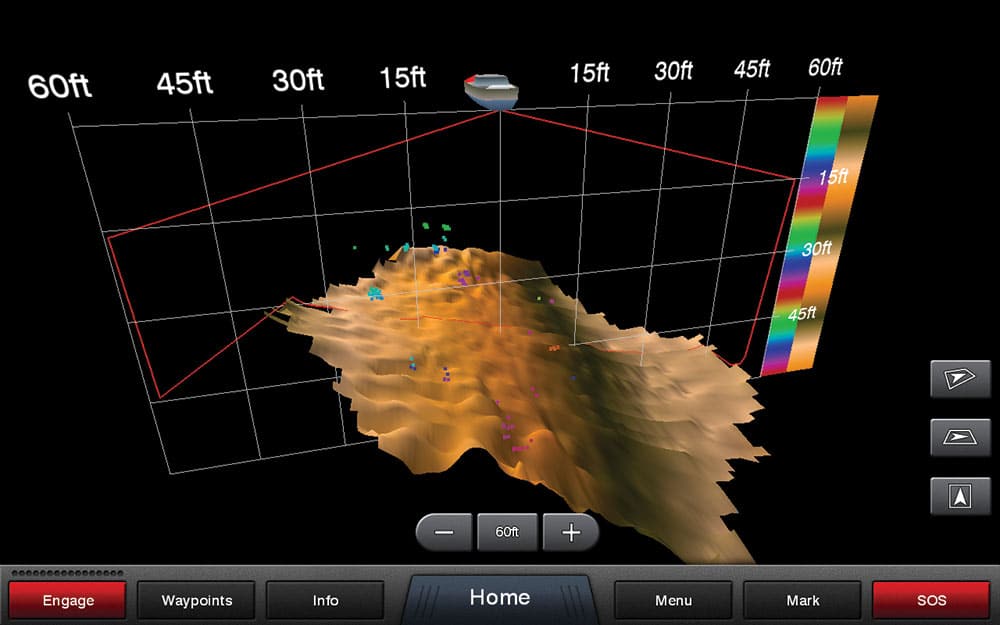
Garmin Panoptix all-seeing sonar differs from all other companies’ 3D products, though it shares some similarities with Furuno’s system. Panoptix is a phased-array multibeam sonar that employs hundreds of signals at a multitude of frequencies at any given time.
Panoptix functions in several modes, including LiveVü and RealVü 3D. “LiveVü is basically what you’re looking at when you’re looking for fish. It’s traditional sonar, except you see fish moving around,” says director of sales and marketing David Dunn. LiveVü literally shows you where the fish are within its beam and what they’re doing in real time.
With a trolling-motor-mounted transducer, anglers can spin the sonar to look up to 300 feet out, all around the boat. Garmin’s new PS22-TR transducer allows anglers to point the transducer down or forward. “RealVü gives you more of a 3D look, similar to what you’re seeing from the other manufacturers,” he says. “With RealVü Down, you can sit still and paint what’s directly under you. You can spin the screen any way you want and look at the bottom from every angle.”
Panoptix transducers employ more than 100 elements and numerous frequencies, which, in itself, makes the product vastly different from other sonars. “This is kind of like chirp, but chirp is still only a few signals at a time. Panoptix is like a machine-gun pattern. We have a lot more chips in the transducer. Basically, it’s a smart transducer,” Dunn says.
Panoptix transducers are compatible with echoMAP 7- and 9-inch units and with any GPSMAP unit made since 2013, which have built-in 3D capability. The PS22-TR transducer costs $999. PS30 or PS31 transducers start at $1,499.
Humminbird
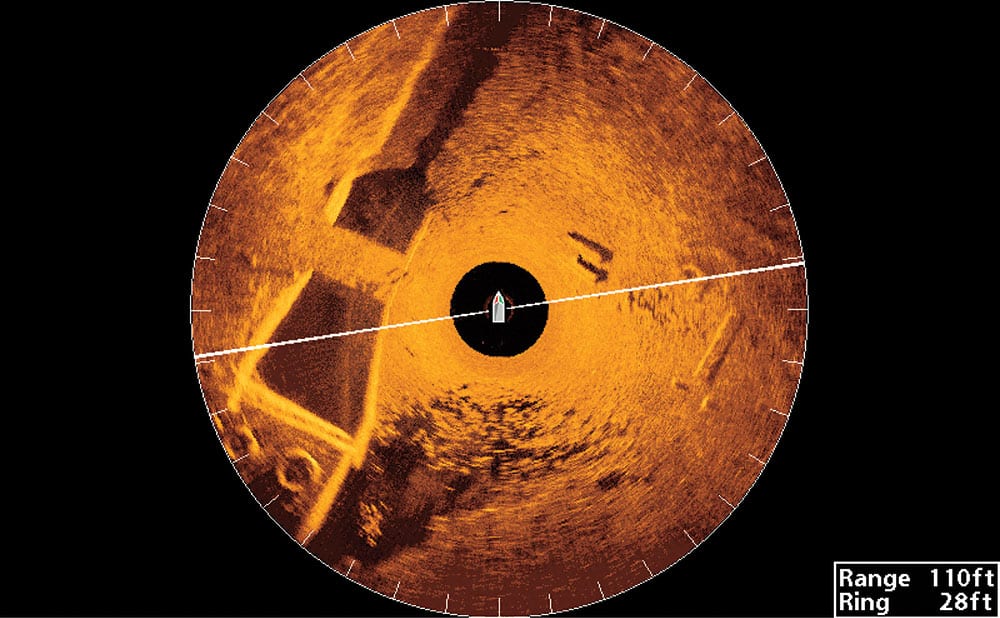
Humminbird’s 360 Imaging doesn’t provide a 3D effect on-screen, but it does show what’s in the water all around the boat, using a transducer that mechanically rotates inside a housing. The vertical housing lowers and raises the transducer and is mounted to the transom (transducers are also available for several models of Minn Kota freshwater trolling motors).
The 360 transducer uses a 455 kHz imaging beam that slices through the water, sending picturelike images to the multifunction display. Anglers can use it from a stationary boat or while moving slowly ahead.
Humminbird says the effective range of 360 Imaging is about 150 feet. “It allows anglers to see structure, baitfish and game fish ahead of the boat, and it provides constant updates for a boat at rest, instead of needing to be underway,” says Jeff Kolodzinski, brand manager.
Humminbird 360 Imaging is compatible with Solix and Helix MFDs (as well as selected earlier models) and costs $1,499.
Lowrance and Simrad
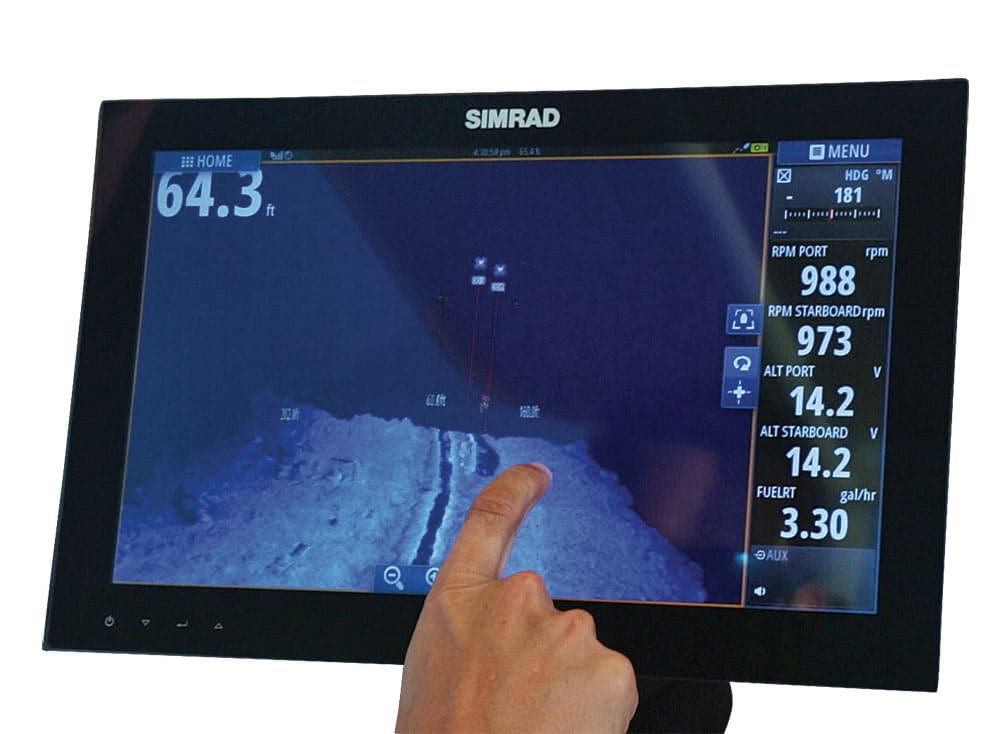
Lowrance and Simrad, both owned by the same company, share the StructureScan 3D platform, which features a transducer with seven elements, three pointed left, three right and one down. “That lets us send a signal out and receive it back in multiple locations,” says Matthew Laster, sonar product manager. “It can send a signal on one element and receive it back on the other two.”
The technology, Laster says, is called interferometry. “Traditional sonar can’t tell you the depth 30 feet to the left or right of the boat,” he says. With 3D, “we can show things not attached to the bottom, and we can put them in real space as to where they’re holding, whether against a wreck or drop-off.”
StructureScan 3D uses the 455 kHz frequency as a compromise between depth and resolution. Lower-frequency beams would achieve greater depth but lose target clarity. “The big offshore guys have not embraced [the technology] yet. They’re not looking for fish on structure,” Laster says, explaining why 3D was designed more for inshore and nearshore anglers.
The 3D transducer captures returns as much as 600 feet to either side of the boat. A variety of mount options allow anglers to properly fit most boats. The 3D module and a single transducer start at $999 and are compatible with Lowrance HDS Gen3 and Carbon MFDs as well as Simrad NSS evo2 and evo3.
Raymarine
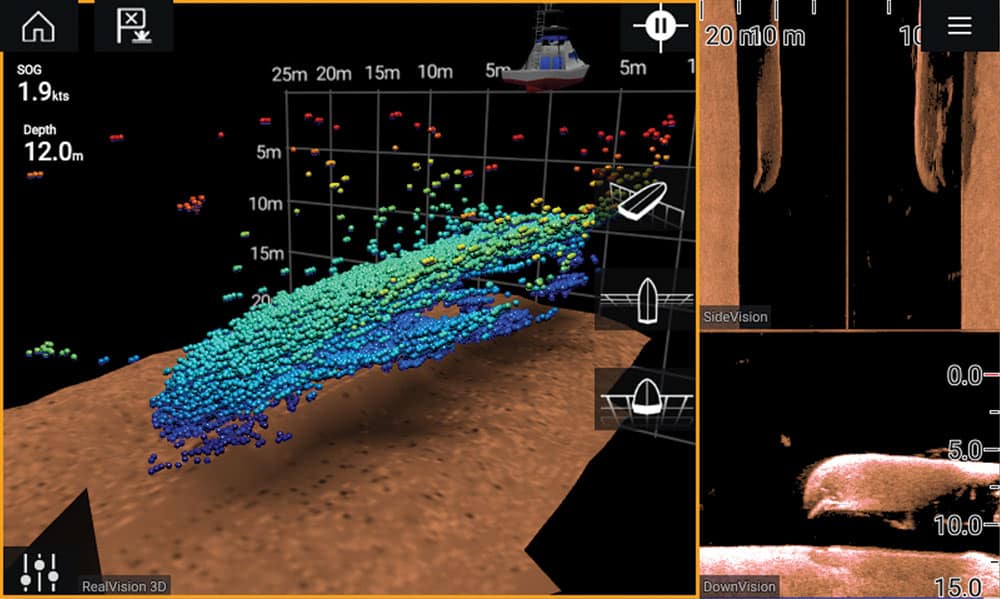
Raymarine’s RealVision “is a very similar concept from what we’ve done with down and side imaging,” says Adam Murphy, global product manager for sonar and radar. “The only thing we had to do was add a separate set of receivers to the side imaging, which allows you to calculate angular distances on returns.”
RealVision’s transducer employs “just under 10” elements, Murphy says, hedging. Specific elements send, and others receive.
The transducer chirps around the 350 kHz frequency range. “We pick elements that are a little more expensive but have a 60 kHz sweep inside those elements. That’s what gets us extra resolution,” Murphy says. Raymarine uses interferometry rather than beam steering or forming. With RealVision, the boat must be moving. The beam can pick up targets and determine their angular position up to 300 feet away.
Raymarine transducers also have an attitude and heading reference system (AHRS), which takes into account the heading, motion and roll of the boat to draw a clearer picture. RealVision is built into Axiom and Axiom Pro units; the entry price is $1,249 (Axiom 7RV and RealVision transducer).

